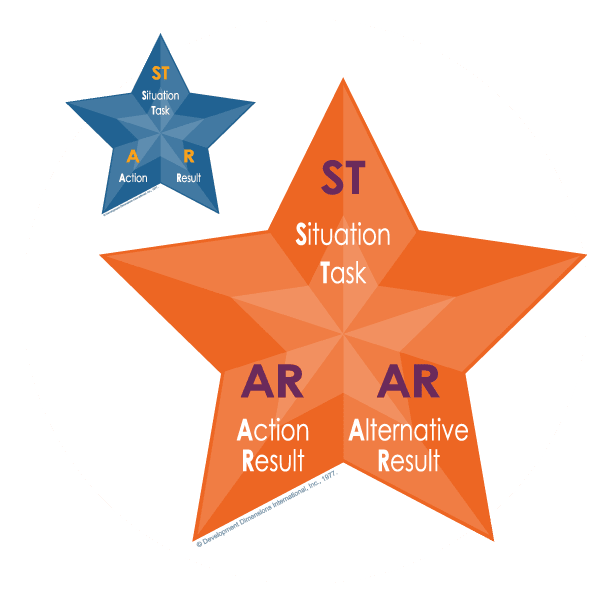How do you feel about feedback? Does the word “feedback” conjure up negative feelings? Maybe you’ve received feedback that has been damaging. Or maybe you struggle to share meaningful, effective feedback in the workplace.
Many leaders I work with find giving feedback difficult; they avoid it because they don’t know how it will be received. Other leaders I work with deliver feedback like a sledgehammer; a direct, harsh, and brutal blow. They fail to think through the impact of their words and communication style on the other person.
We’ve all heard the saying, “feedback is a gift,” and many employees appreciate receiving feedback (especially constructive feedback). But the same employees tend to dislike giving feedback (specifically negative feedback). This is an interesting dynamic, isn’t it? It seems we like receiving constructive feedback to help us improve but we dislike sharing feedback for improvement. In my experience, people dislike giving feedback because they don’t know how to do it effectively.
The Consequences of a Poor Feedback Experience
It’s taken me a long time to realize that receiving feedback doesn’t have to be a negative experience. The experience depends on the feedback method, or how it’s delivered, and the relationship between the people giving and receiving feedback. I can recall a feedback experience that stuck with me for more than 10 years.
It was early in my career, and I was in my mid-twenties. My manager told me I wouldn’t be taken seriously because I looked “too young,” and this was going to limit the opportunities in my role. This feedback made me feel discouraged and frustrated because there was little I could do to appear older. Although I did actually contemplate getting glasses to appear more mature.
My manager’s feedback not only wasn’t helpful, but was also delivered insensitively, damaging my self-esteem. It fractured the relationship I had with my manager because I felt I would not be considered for opportunities because of my age and appearance.
If saying “great job” or pointing out personal characteristics isn’t good feedback, then what is good feedback?
The feedback was focused on me and not on my behaviors. If my manager had been equipped with better skills around giving feedback, they might have shared ideas with me about how I could instill confidence in and earn the trust of my partners and colleagues, despite being early in my career.
Many organizations do not have a strong feedback culture to build these skills. A friend recently told me that leaders in her firm are “rubbish” at giving feedback. “They give praise like ‘great job’ and think that is feedback. When you ask for more specific feedback, they avoid eye contact and can’t follow it up with examples.”
If saying “great job” or pointing out personal characteristics isn’t good feedback, then what is good feedback?
What It Means to Have Effective Feedback in the Workplace
Giving feedback is a critical way to involve, encourage, and energize others to achieve results and improve their skills. You can use a framework for providing effective feedback in the workplace to ensure your feedback is relevant, insightful, and impactful for all the right reasons. Below are the characteristics of effective feedback in the workplace.
1. Effective Feedback Is Intentional and Well Prepared
Too many times people tell me feedback they’ve received isn’t well delivered. Leaders have also told me that they don’t prepare before sharing positive or developmental feedback. This can be a recipe for disaster.
Plan how you will give feedback and what you will say ahead of time. You should also consider what forum and format you give the employee feedback.
In my first professional job, my boss sent me a long email berating me for a mistake I made and copied in a colleague. I was embarrassed that my colleague was privy to the exchange and the email format didn’t facilitate any conversation to learn from my mistake. Soon after, I left that organization.
The bottom line is that feedback method matters. While it may be appropriate to share positive feedback via email, and to include others to hear the good news, developmental feedback is best delivered face to face (in person or over a video call with the camera on) without any bystanders.

2. Effective Feedback Is Specific
While it’s nice when someone acknowledges your work, saying “good job” doesn’t cut it. Statements of praise alone are vague and don’t tell someone exactly what they did that was good. Try pairing statements of praise with specifics so employees know what behaviors to repeat. You can use the STAR or STAR/AR format to provide specific feedback and ensure your feedback is clear. Describe the situation or task (ST), the actions the person took in response to that situation (A), and the result of their actions (R).
When providing developmental feedback, provide the STAR but also seek or share an alternate action they could have taken and the alternate result. The STAR and STAR/AR feedback method ensures that your feedback is focused on the behavior and not on the person.
This method for delivering feedback is evidence of a growth mindset rather than a fixed mindset. Leaders with a growth mindset believe in personal and professional growth and development and the ability to learn from mistakes.
3. Effective Feedback Is Considerate of Personal and Practical Needs
Your feedback will be better received if you are mindful of emotions and how you communicate feedback. Each of us has core human needs to feel valued and recognized for our contributions and to be listened to and understood.
When giving positive and developmental feedback, pay attention to what emotions your employee expresses and respond with empathy. Failing to notice or acknowledge emotions can be a barrier to delivering feedback effectively and building trust with your employee. When your feedback method criticizes and doesn’t recognize effort, you can damage esteem. You should also be mindful of your tone and nonverbals when delivering feedback.
Additionally, you should be mindful of meeting an employee’s practical needs when you deliver feedback. Sharing positive feedback gives team members actionable information about what they can keep doing to be successful in their work. Sharing developmental feedback offers goals for team members to work toward, proving their capability to grow and learn.
4. Effective Feedback Is Timely
Saving feedback for formal performance reviews doesn’t have the same impact as delivering it as soon as you see a behavior. Delaying feedback until formal conversations also denies employees the opportunity to learn, grow, and improve along the way. To maximize its effectiveness, try to provide feedback as close to when the performance happens as possible.
The effectiveness of your feedback depends on many factors—the trust that exists between you and the other person, your EQ, how open the recipient is to receiving feedback, the nature of the feedback, and the words you choose. Take time to consider this when you are preparing to share feedback.
How to Ask Your Employees for Feedback
Feedback is critical for all professionals, especially for leaders. DDI’s extensive research found that a key positive leadership differentiator is being receptive to feedback.
We also found that the more you ask for feedback, the more effective you tend to be as a leader. So not only is it vital for leaders to provide feedback, but it is also vital to ask for and be receptive to feedback.
By encouraging feedback on your leadership, including from the teams you lead, you help create an environment where people are more comfortable giving positive feedback and suggesting areas for improvement.
As a leader, you can gather feedback by:
- Scheduling regular feedback sessions with your direct reports, peers, and your leader. Ask questions and seek examples.
- Cultivating relationships with people who will give you constructive feedback. Seek out those who are comfortable delivering feedback and seek their perspective regularly. For example, a friend of mine developed what he calls an “open feedback relationship” with a peer in his organization. They meet weekly to share feedback and observations. He recently reflected on how helpful this relationship has been for his growth and development.
- Asking for 360-degree feedback. Use a tool such as Leadership Mirror® to make it easy for those you work closely with to share open and specific feedback anonymously.
How to Be Receptive to the Feedback You Receive
You not only need to seek feedback, but you also need to demonstrate receptiveness to that feedback. You can show your receptiveness to feedback by accepting and acting on developmental feedback.
Next time you receive feedback, try these things to become more receptive to it:
- Resist the initial urge to be defensive. Instead ask yourself, “Do I need to be praised or do I just need to be the best I can be?” Defensiveness can result in others feeling afraid of giving and sharing feedback.
- Model the behaviors you want from others. Demonstrate open-mindedness and be aware of your emotions and nonverbals when receiving feedback. And if you think you are self-aware, think again! Research tells us that while 95% of people think they are self-aware, only 10-15% truly are!
- Tell others how you have acted on their feedback. Nothing shows others you value and respect their feedback like acting on it and sharing what you are doing to improve. This will help you to continue to cultivate a positive feedback culture and relationships.
Normalizing Feedback Is Key
We know the benefits of a high-engagement work culture. A recent study of more than 20,000 leaders showed that strong team engagement is built on honest feedback.
So, if you want to improve your team’s engagement, start by providing them with clear, specific, and balanced feedback regularly and seeking feedback from others. Normalize feedback and you will start to see the immense benefits, including higher employee engagement, higher retention of talent, and more open and honest communication.
About the Author
Cecelia Zaris is a senior consultant at DDI with a passion for coaching and developing leaders to be their best selves. She is the mother of two young boys, so when she isn’t coaching leaders or facilitating leadership development programs, she can be found building Legos, watching back flip after back flip, and refereeing wrestling matches.
Topics covered in this blog

